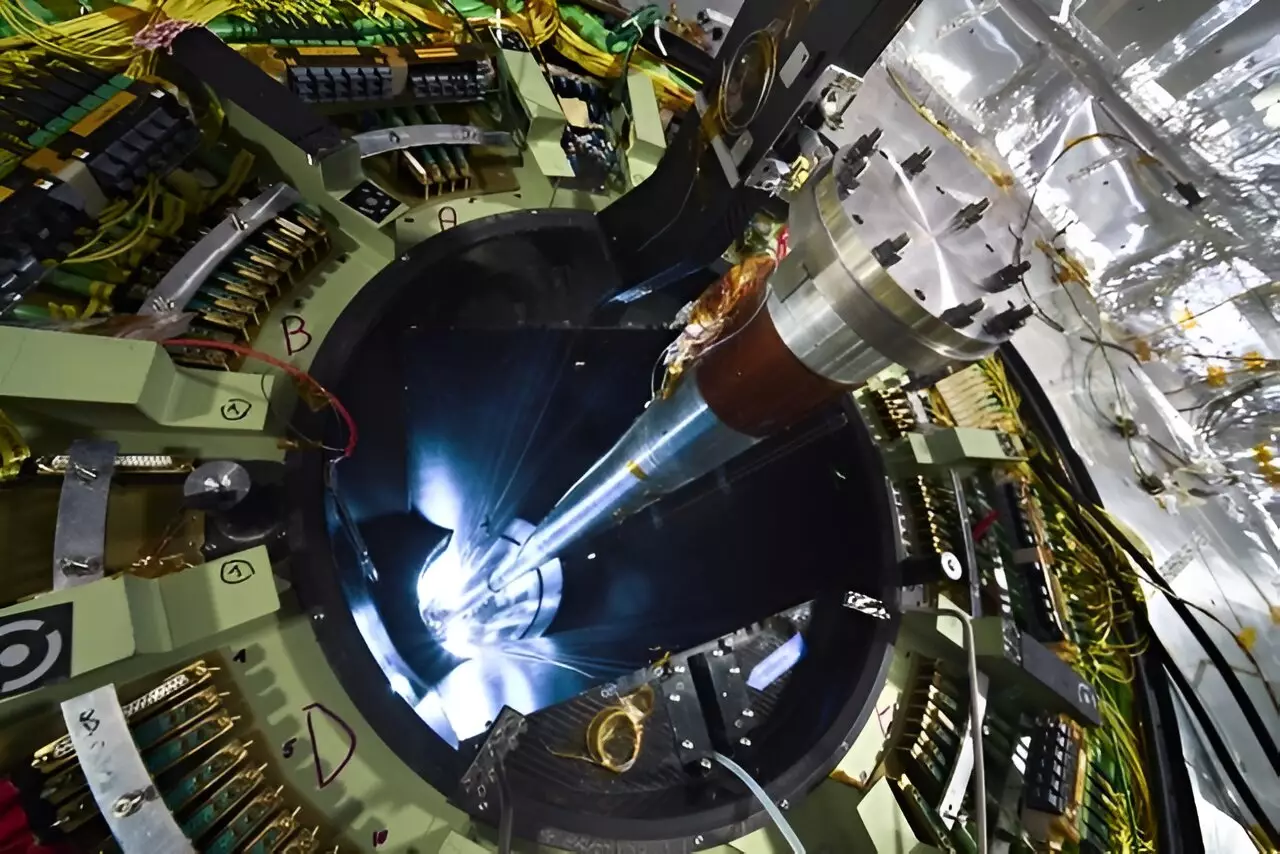In the realm of theoretical physics, few concepts have sparked as much intrigue as that of the magnetic monopole. Proposed as hypothetical particles possessing only a single magnetic pole—either a north pole without a south or a south pole without a north—these entities have captivated the minds of scientists since they were first posited by luminaries such as Pierre Curie and Paul Dirac. Despite being a cornerstone of various physical theories, the existence of magnetic monopoles has remained largely unverified for decades. However, an international research effort, spearheaded by the University of Nottingham and involving a pioneering experiment at CERN’s Large Hadron Collider (LHC), has brought us closer than ever to discovering whether these elusive particles actually exist.
Recent investigations conducted on a decommissioned section of the LHC’s beam pipe have opened a unique chapter in the search for magnetic monopoles. Researchers from the MoEDAL experiment analyzed this vintage beam pipe, originally positioned at the collision point of the Compact Muon Solenoid (CMS) experiment, which had witnessed the aftermath of billions of high-energy collisions between particles. The significance of this location lies in its exposure to remarkable radiation levels generated during these interactions. This research, published in *Physical Review Letters*, does not merely revisit prior explorations but rather sets the stage for future discoveries by establishing the strictest limits yet on the possible existence of magnetic monopoles.
Research leader Oliver Gould, a distinguished physicist at the University of Nottingham, emphasized the potential impact of confirming magnetic monopoles: “If proven true, their existence would herald a revolutionary shift in our understanding of fundamental physics.” His words encapsulate the excitement surrounding this endeavor and the implications it holds for the literature of particle physics.
The team of researchers conducted their analysis using innovative technology. At the heart of their efforts was the use of a superconductive magnetometer, an instrument capable of detecting minute magnetic charges. This advanced device enabled scientists to probe the inner workings of the beam pipe for any signs of trapped magnetic charges that may point to the existence of monopoles. During their investigations, the physicists considered various high-energy collision scenarios, theorizing that the immense magnetic fields produced—exceeding even those found around rapidly spinning neutron stars—could produce monopoles via the Schwinger mechanism.
Under these intense conditions, the expectation was that monopoles, if they existed, would remain stationary as they could not decay due to the conservation of magnetic charge. Consequently, any entities generated would likely become ensnared in the material of the beryllium beam pipe itself.
Despite the rigorous search efforts and the innovative framework employed, the experiment yielded no direct evidence for the existence of magnetic monopoles. However, the findings are far from discouraging; the study successfully ruled out the presence of magnetic monopoles lighter than 80 GeV/c², achieving unprecedented constraints on the magnetic charge between two and 45 base units.
Encouragingly, the researchers have plans for future investigations. As Oliver Gould noted, the possibility of examining more recent beam pipes from subsequent LHC runs, which operated at higher energy levels, could significantly enhance their ability to detect magnetic monopoles. “With these elevated energies, we could effectively double our exploratory potential,” he stated, echoing the optimism that research teams hold toward these elusive particles.
The quest to validate the existence of magnetic monopoles is emblematic of the larger journey within particle physics, where boundaries are continuously pushed and new horizons await exploration. Though this research has yet to yield a direct discovery, its methodologies represent a significant leap toward unraveling one of theoretical physics’ most historic dilemmas. The commitment and ingenuity displayed by the researchers also underscore the collaborative spirit that defines modern science. As they continue their investigations, one can only hope that the next breakthrough in our understanding of the universe could indeed lead us to the enigmatic magnetic monopole.


Leave a Reply